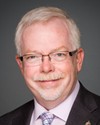Perhaps providing a little historical reference might make this a little clearer.
The environmental response program was one of three programs transferred in 2003 from the Canadian Coast Guard to Transport Canada, when the coast guard became a special operating agency. The programs that were specifically transferred over were programs that had a regulatory mandate.
Some of the responsibilities, specifically those for the environmental response program, were split. The response authorities and responsibilities were retained by the coast guard, which is why we have pollution response officers. At that time, prior to 2003, we had pollution prevention officers as well who did the prevention work, as opposed to the ships' officers in the field, who are out there in the event of a response.
In terms of the pollution prevention officer, in some ways that specific designation is somewhat of a legacy issue of that particular point in time. In an effort to harmonize it, it has also been linked to what we're doing with our administrative monetary penalties. We have marine safety inspectors. We also have pollution prevention officers. The authorities are simply being harmonized under the marine safety inspection authorities portion of the act.
It is very much an administrative move internal to the act in order to make it a cleaner process for us for our training. For our inspectors in the field, it gives them certain authorities that the marine safety inspectors had as well.
As my colleague Monsieur Lachance said earlier, we have marine safety inspectors, but we also have these dedicated resources as well, which are the pollution prevention officers. They all have the designation.



